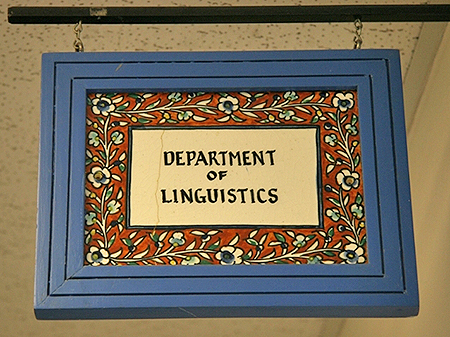
Linguistics ETDs
Publication Date
Summer 7-13-2018
Abstract
In this dissertation, I seek to better understand the nature of the relationship between meanings expressed in gesture and those expressed in speech. This research focuses on the use of cyclic gestures in English. Cyclic gestures are manual co-speech gestures that are characterized by a circular movement of the hand or arm. Despite cyclic gestures being commonplace in many types of spoken discourse, no previous studies to date have specifically explored the functions these gestures serve in English.
Broadly, this dissertation addresses two questions: (1) What functions do cyclic gestures serve in interaction in English, and (2) how are cyclic gestures integrated with other meaningful units in multimodal expressions? Using data collected from television talk shows, I examine the functional-semantic properties of spoken language expressions that accompany cyclic gestures and identify properties of meaning that repeatedly align with the expression of the gestures. I also explore relationships between fine-grained formal properties of cyclic gestural expressions and functional-semantic properties of the co-expressed speech. The results of the study find a number of significant relationships between gesture forms and spoken language meanings. For example, when cyclic gestures were expressed with spoken constructions serving an evaluative function, they were significantly associated with bimanual asynchronous rotations and finger spreading (p < .001) with a moderately strong effect size (φc = 0.26).
Drawing on the patterns identified in the analysis of the data, I analyze cyclic gestures as component symbolic structures that profile schematic processes. I argue that formal properties that accompany cyclic movement gestures (e.g., handshapes and locations of the hands in space) have the potential to be meaningful. Data from English suggest that cyclic gestures can integrate simultaneously with other symbolic structures in gesture to form complex gestural expressions (i.e., symbolic assemblies). Extending theoretical tools from the framework of Cognitive Grammar (Langacker, 1987, 1991), I explore how the schematic meaning of cyclic gestures is instantiated in specific complex gestural expressions and how those gestural constructions interact with symbolic structures in speech.
This work challenges traditional assumptions about the nature of gesture meaning, which treats gestures as simplex, holistic structures. Instead, the findings of this research suggest that gestures are best analyzed as constructions.
Language
English
Keywords
gesture, cognitive grammar, multimodality, construction grammar
Document Type
Dissertation
Degree Name
Linguistics
Level of Degree
Doctoral
Department Name
Department of Linguistics
First Committee Member (Chair)
Sherman Wilcox, PhD
Second Committee Member
Melissa Axelrod, PhD
Third Committee Member
Barbara Shaffer, PhD
Fourth Committee Member
Eve Sweetser, PhD
Recommended Citation
Hirrel, Laura. "CYCLIC GESTURES AND MULTIMODAL SYMBOLIC ASSEMBLIES: AN ARGUMENT FOR SYMBOLIC COMPLEXITY IN GESTURE." (2018). https://digitalrepository.unm.edu/ling_etds/57


